This unit standard provides for the record-keeping of team activities and team members. This unit standard is intended for junior managers of organisations. The qualifying learner is capable of explaining why organisations record and keep information, identifying and describing the type of records a team leader is required to keep, recording team performance against agreed targets and recording performance data..
This unit standard focuses on the record-keeping responsibilities for team activities and team members, specifically aimed at junior managers within organisations. It equips learners with the skills to explain the importance of record-keeping in organisations, including its role in ensuring compliance, tracking progress, and supporting decision-making. Learners will be able to identify and describe the types of records that team leaders must maintain, such as performance metrics, attendance, and activity logs. They will also learn to accurately record team performance against established targets and manage performance data effectively. This unit standard is designed to ensure that junior managers can maintain organised and comprehensive records that contribute to effective team management and organisational success.
Course Content
- The reasons for recording information are explained according to organisational requirements
- The methods of creating and storing records in the organisation are explained according to Standard Operating Procedures
- The purpose for which records are used is described with examples
- The reporting requirements of a team leader are identified in accordance with Standard Operating Procedures
- Information about team members that a team leader is required to keep is described with examples
- Documents relating to the operational requirements of the team are kept in accordance with Standard Operating Procedures
- Information relating to team outputs against agreed targets is recorded according to Standard Operating Procedures
- Reasons for variances between agreed and actual output are recorded according to Standard Operating Procedures
- A report on a team’s output is formulated and distributed according to Standard Operating Procedures
- Procedures, which are in alignment with legislative and organisational requirements, are developed for the administrative systems.
- The procedure for each element of the administration system is explained to employees in line with the policies developed.
- The policies and procedures are collated into a written manual in company-specific format.
- Non-accredited: Short course only
- Duration: 1h 30m
- Delivery: Classroom/Online/Blended
- Access Period: 12 Months



